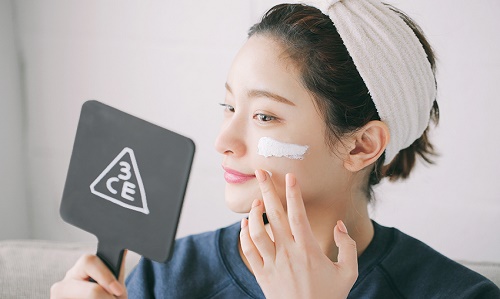Skin Types
Here we talk about the most common skin types, “dry, normal, oily and combination”. It’s important to know what skin type you have, not every product is made for every skin type. If you have dry skin then you should be looking for products targeted for dry skin, if you have oily skin then you should be looking for products targeted for oily skin, etc.
Know your skin type and get the best product suitable for your skin.
Dry Skin:
If you have dry skin that means that your skin doesn’t produce enough oil. Don’t confuse dehydrated skin and dry skin with each other, both are not the same thing. Dry skin is a skin type, and dehydrated skin is a skin condition. Dehydrated skin means that your skin is lacking water, and this can happen to everyone regardless of your skin type. Dry skin is really focused on the oil part, as mentioned above dry skin lacks oils, or lipids.
Causes
• Genetics
• Aging
• Too high or too low pH levels
• Harsh products: Soaps, cleansers, shampoos, etc. are all meant to remove the dirty oil of your skin, meaning they can also strip your skin and that will lead to dry skin.
• Swimming in pools: Because of the chlorine in swimming pools your skin can dry out because of that.
• Heating, Hot shower/bath
• Climate, Weather, Seasons: Dry climate can be one of the causes for you to have dry skin, some experience dry skin when the season is changing, cold winter months, sun exposure. • Skin Conditions: Psoriasis, Eczema, Contact dermatitis
• Health Conditions: Malnutrition, Kidney Disease, Dialysis, Medication Signs
Signs:
• Tightness
• Itching
• Peeling, flaking, scaling
• Redness
• Prone to cracking, rough patches
• Deep cracks that may bleed
• Fine lines
• Skin feels rough
• Skin looks gray, ashy, dull
Normal Skin:
Having normal skin means that your skin isn’t too dry or too oily. Normal skin doesn’t mean that your skin is perfect, it just means that your skin has less issues compared to other skin types. Normal skin can still experience a bit of dryness or a bit of oiliness, then it’s recommended to look for products targeted for normal to dry or normal to oily/combination.
Signs:
• Skin isn’t too oily
• Skin isn’t too dry
• No or few imperfections
• No severe sensitivity
• Barely visible pores
• A radiant complexion
Oily Skin:
Oily skin means that your skin produces too much oil. So it’s the exact opposite of having dry skin, which the skin doesn’t produce enough oil.
Causes:
• Genetics
• Hormones
• Climate, Weather, Seasons: If you live in a humid climate that might be one of the causes for you to have oily skin, the weather and season can also play a role, for example there’s a lot of humidity in the air or when it’s summer!
Signs:
• Skin looks oily/greasy
• Large pores, especially in the T-zone
• Blackheads, especially in the T-zone
• Sebaceous Filaments more noticeable: We all have sebaceous filaments but for those with oily skin and high sebum production these sebaceous filaments are more noticeable.
• Prone to acne and breakouts
• Makeup doesn’t sit throughout the day
Combination Skin:
We have learned about dry skin and oily skin before, but did you know that you can have both dry and oily skin? This is called combination skin, there are some parts on your face that might be oily while other parts might be dry. Most common form is that the T-zone (forehead, nose, and chin) is oily and the cheeks dry. I (Domi~) have combination skin too, for my case it’s that my T-zone is oily but my cheeks are normal. It’s also possible that you might have oily cheeks and the T-zone is dry (or normal). If you notice that a part of your face is oily and the other is either normal or dry then you have combination skin.
Causes:
• Genetics
Signs:
Oily Parts:
• Skin looks oily/greasy
• Large pores, especially in the T-zone
• Blackheads, especially in the T-zone
• Sebaceous Filaments more noticeable: We all have sebaceous filaments but for those with oily skin and high sebum production these sebaceous filaments are more noticeable.
• Prone to acne and breakouts
• Makeup doesn’t sit throughout the day
Dry Parts:
• Tightness
• Itching
• Peeling, flaking, scaling
• Redness
• Skin feels rough




